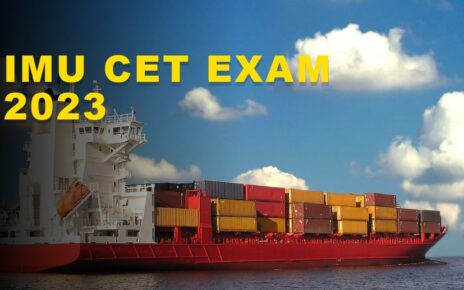The Ship Energy Efficiency Management Plan (SEEMP) Part 3 is the final component of SEEMP, designed to provide a comprehensive framework for shipowners and operators to further enhance the energy efficiency of their vessels. It focuses on establishing a culture of continuous improvement and sustainability within the maritime industry. In this article, we will explore SEEMP Part 3, its purpose, key components, and how it contributes to sustainable and environmentally responsible shipping practices.
Purpose of The Ship Energy Efficiency Management Plan Part 3:
SEEMP Part 3, often referred to as SEEMP for Ship Operation, is centered on the ongoing improvement of a ship’s energy performance and environmental footprint. Its primary purpose is to provide a structured approach to energy management that goes beyond operational measures and considers the entire lifecycle of a vessel. It aims to instill a commitment to sustainability, energy efficiency, and emissions reduction throughout a ship’s operational life.
Components of SEEMP Part 3:
1. Introduction: It begins with an introduction that reinforces the importance of sustainability and long-term energy management. It highlights the role of SEEMP in fostering a culture of continuous improvement within the maritime industry.
2. Energy Management Team: This section outlines the roles and responsibilities of the Energy Management Team, emphasizing the importance of having a dedicated team to oversee energy management and sustainability initiatives.
3. Energy Performance Baseline: It requires the establishment of an energy performance baseline for the vessel. This baseline serves as a reference point for assessing future improvements and identifying areas where energy efficiency measures can be implemented.
4. Monitoring and Data Collection: The plan emphasizes the need for continuous monitoring and data collection related to the vessel’s energy consumption, emissions, and operational performance. Accurate data is essential for making informed decisions.
5. Energy Efficiency Measures: It provides guidance on identifying and implementing energy efficiency measures at various stages of a ship’s life, from design and construction to operation and maintenance.
6. Environmental Impact Assessment: This component encourages shipowners and operators to conduct environmental impact assessments, taking into account factors such as emissions, fuel consumption, and waste management. It helps in identifying potential environmental risks and mitigation measures.
7. Documentation and Reporting: Proper documentation and reporting are essential for tracking progress and compliance with SEEMP Part 3. Records should include details of energy efficiency measures, assessments, and any deviations from the plan.
8. Review and Continuous Improvement: SEEMP Part 3 emphasizes the importance of regular reviews and assessments to evaluate the effectiveness of energy efficiency measures and environmental impact mitigation. Feedback from the Energy Management Team and crew is crucial for continuous improvement.
Benefits of SEEMP Part 3:
Implementing SEEMP Part 3 offers several benefits for shipowners, operators, and the environment:
1. Sustainability: It promotes a long-term commitment to sustainability, aligning with global efforts to reduce the environmental impact of shipping.
2. Efficiency Gains: By continuously monitoring and improving energy performance, ships can achieve greater efficiency, leading to reduced fuel consumption and operational costs.
3. Emissions Reduction: It contributes to the reduction of greenhouse gas emissions and other pollutants, supporting a cleaner and more environmentally friendly maritime industry.
4. Regulatory Compliance: Compliance with SEEMP Part 3 demonstrates a commitment to environmental responsibility and aligns with international regulations and guidelines.
5. Operational Excellence: Continuous improvement in energy management and sustainability practices can lead to operational excellence, enhancing a ship’s competitiveness and reputation.
In conclusion, SEEMP Part 3 represents the culmination of the Ship Energy Efficiency Management Plan, emphasizing long-term sustainability and continuous improvement in energy management within the maritime industry. It provides a structured approach to environmental stewardship, energy efficiency, and emissions reduction throughout a ship’s operational life. By implementing SEEMP Part 3, shipowners and operators can contribute to a more sustainable and environmentally responsible future while optimizing their operations and complying with international regulations.



